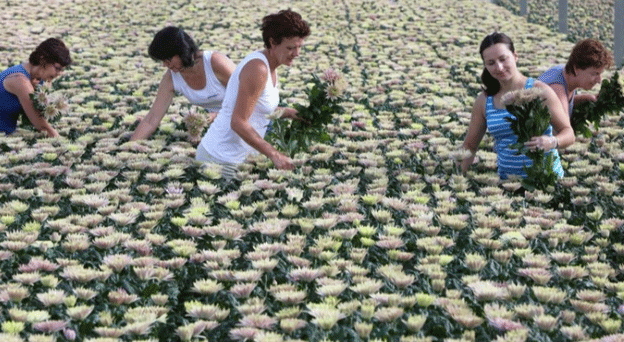Vertify’s screening of starting material revealed that many plant samples were not entirely free from pests. Insects such as thrips and spider mites were found in some samples, despite the absence of visible signs of damage during initial inspections. In eight of the seventeen samples, pests were detected. The highest concentration was in cyclamen seedlings, where a total of 21 thrips and two spider mites were found across 20 seedlings. Additionally, all chrysanthemum samples showed the presence of pests.
One notable finding was during a caged trial, where an adult thrips was caught on a sticky trap placed in a sample of pepper plants. This finding highlights the difficulty in visually detecting pests, as many can be hidden or in stages of development that are not immediately obvious. Even more concerning was the discovery of diseases through DNA multiscan tests. However, the levels of these pathogens were too low to determine their specific impact on the plants, leaving uncertainty about their potential pathogenicity.
Risks of Contaminated Starting Material
The implications of contaminated starting material are significant for greenhouse growers. If pests or diseases are introduced at the start of the growing season, they can quickly spread, undermining the success of biological control measures and leading to increased reliance on chemical treatments. This not only affects crop quality but also disrupts the ecological balance within the greenhouse environment. For growers aiming to build a strong foundation for integrated pest management (IPM) strategies, the presence of pests in starting material can hinder efforts to establish beneficial insects early in the season.
Practical Steps for Farmers: Early Detection and Control
The researchers at Vertify emphasized the importance of early detection in preventing outbreaks. They recommend that growers take their own samples from batches of plants and conduct tests. One effective method is placing plants in cages with sticky traps to monitor for pests, or sending samples to research institutions for flushing tests. This proactive approach enables growers to detect the presence of pests and diseases early and implement control strategies before infestations become severe.
Moreover, ongoing collaboration between research institutions like Vertify and industry organizations such as Glastuinbouw Nederland is vital for advancing knowledge and improving the sector’s preparedness. The continuation of screenings as part of the “Kas als Ecosysteem” pilot program, funded by the “Het Nieuwe Doen in Plantgezondheid” innovation program, will provide further insights into the challenges greenhouse growers face and offer guidance on best practices.
Clean starting material is the cornerstone of a successful and sustainable greenhouse crop. While the study by Vertify is based on a small sample, it provides a crucial warning to the industry: pests and diseases can be introduced into greenhouse environments through seemingly healthy plants. By taking proactive steps to screen and monitor plant material, growers can mitigate these risks and ensure a healthier growing season. Continued research and innovation are essential to support the industry in adapting to these challenges and maintaining high crop quality.










